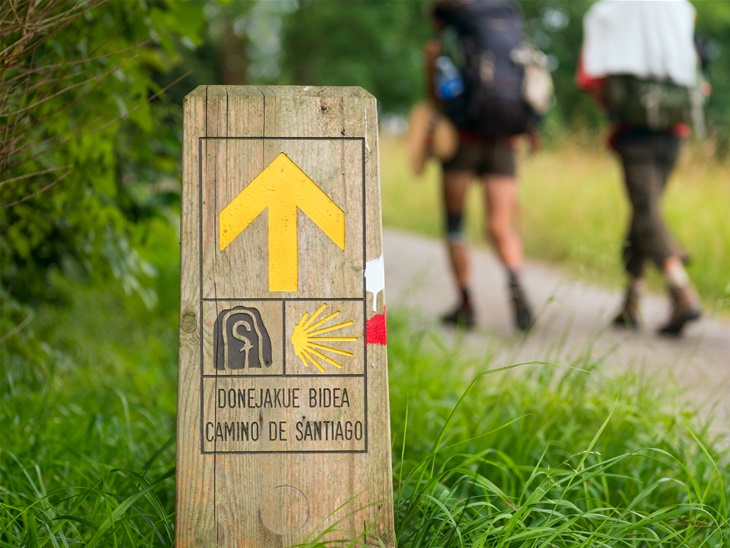Camino de Santiago - Facts:
- Camino de Santiago means Way of St James and refers to the different routes leading to Santiago de Compostela, in Galicia.
- Compostela means the field of stars.
- Traditionally, pilgrims used to start their 'Camino' from their own homes.
- There are many Camino de Santiago routes, starting in France, Portugal and Spain.
- The Camino Primitivo from Oviedo is the oldest Camino de Santiago route.
- The most famous Camino route is the Camino Frances or French Way that starts in St Jean Pied de Port, in the French Pyrenees.
- The most popular starting point for Camino pilgrims is the town of Sarria, in the province of Lugo.
- The trail from St Jean Pied de Port to Santiago is 800km / 500miles long and takes approximately five weeks to complete but you can start your Camino at any point.
- The yellow scallop shell and yellow arrows mark the way to Santiago. Painted on trees, paths, tiles, etc… the scallop shell (or ‘vieira’ in Galician and Spanish) will help travellers find their way.
- Buen Camino, Bon Camiño or Ultreia are friendly pilgrim greetings exchanged along the way.
- Over 200,000 pilgrims reach Santiago each year and receive their Compostela certificate.
- To receive your Compostela certificate you must walk at least 100km and make sure your pilgrim passport is stamped at least once a day.
- You will need to cycle at least 200km to Santiago to receive your Compostela certificate. Cyclists on the Camino are known as 'bici-grinos' (bike-pilgrims).
- If you walk the Camino for cultural or non-religious/spiritual reasons, you can receive a certificate of welcome.
- 25th July, St James Day, is a holiday in Santiago and Galicia. If this falls on a Sunday, it is considered to be a holy year or Ano Xacobeo. This last occured in 2010 and is set to happen again in 2021.
- The Holy Door of Santiago Cathedral only opens on Holy Years.
- Santiago de Compostela old town is a UNESCO-listed heritage site since 1985 and its University dates back to 1495. The Council of Europe named the Camino de Santiago as the first European Cultural itinerary in 1987 for its important role encouraging cultural exchanges since the Middle Ages.
- Santiago de Compostela remains the third holiest place in Christendom and the number of holy pilgrims continues to increase annually.
- The 12th century Codex Calixtinus is the oldest Camino de Santiago 'guidebook'.




